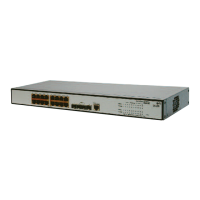1-14
Description
Use the snmp-agent community command to create an SNMP community. SNMPv1 and SNMPv2c
use community name to restrict access rights. You can use this command to configure a community
name and configure read or write access right and ACL.
Use the undo snmp-agent community command to remove an SNMP community.
Typically, “public” is used as a read community name, and “private” is used as a write community name.
For the security purposes, you are recommended to configure another community name except these
two.
Examples
# Create an SNMP community named comaccess, which has read-only permission to MIB objects.
<Sysname> system-view
System View: return to User View with Ctrl+Z.
[Sysname] snmp-agent community read comaccess
# Create an SNMP community named mgr, which has read-write permission to MIB objects
[Sysname] snmp-agent community write mgr
# Remove the community named comaccess.
[Sysname] undo snmp-agent community comaccess
snmp-agent group
Syntax
1) Version 1 and version 2c
snmp-agent group { v1 | v2c } group-name [ read-view read-view ] [ write-view write-view ]
[ notify-view notify-view ] [ acl acl-number ]
undo snmp-agent group { v1 | v2c } group-name
2) Version 3
snmp-agent group v3 group-name [ authentication | privacy ] [ read-view read-view ] [ write-view
write-view ] [ notify-view notify-view ] [ acl acl-number ]
undo snmp-agent group v3 group-name [ authentication | privacy ]
View
System view
Parameters
v1: Specifies SNMPv1.
v2c: Specifies SNMPv2c.
v3: Specifies SNMPv3.
group-name: Name of the SNMP group to be created, a string of 1 to 32 characters.
authentication: Configures to authenticate but do not encrypt the packets.
privacy: Configures to authenticate and encrypt the packets.
read-view: Read-only view name, a string of 1 to 32 characters. The default value is ViewDefault.

